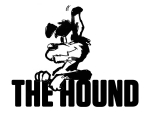FEEDING American dried distillers grains is unlikely to cause problems with China, say agribusiness specialists.
GE Free NZ recently claimed that the NZ dairy industry’s use of 16,000t of GE soy and GE maize per month in the form of dried distillers grain (DDG) could create further barriers to our dairy products in China
The group made the claim after it discovered that some of the by-product, which is now barred from China, was being sold in NZ as a dairy feed.
A US grain industry group claims Chinese officials prevented 1.45m t of maize-derived DDG from being landed in November 2013 due to the possible presence of the genetically modified maize strain Agrisure Viptera (MIR 162).
Developed by the Swiss agrichemical and seed company Syngenta, the maize strain was engineered to produce proteins that ward off bugs including corn borer and black cutworm.
Though the seed variety was launched in 2011 after getting the nod from biosecurity and food safety authorities in Canada, Australia, Argentina, US and Brazil, approval for its use as a by-product was still on hold in China even though the company had submitted it for clearance to authorities there in 2010.
In April 2014 some US players said exports were 85% behind earlier years and that China was using the presence of the strain as an excuse to protect its own industry from competition. But NZ analysts say a more likely cause is China’s bureaucracy, sometimes difficult to work with.
NZ sheep and beef was held up on Shanghai docks in April-May last year because export certificates were issued on then-new MPI letterhead, confusing Chinese officials familiar only with documents from the NZ Food Safety Authority.
US grain giants Trans Coastal Supply Co and Cargill have sued Syngenta, blaming it for the blockage and claiming it had rushed to market without gaining all necessary approval to recoup the costs in development of the new variety.
Global US DDG prices are said to have dropped by about US$100/t since mid-2014, raising the interest of NZ feed companies due to its value for money.
GE Free NZ claims the 100,000t of US DDG and GM soy brought into New Zealand in Feb-Aug 2014 is up on last year and a threat to the NZ dairy industry due to its erosion of the country’s ‘clean green’ brand.
While feed companies say they have increasingly used it in their mixes and as a standalone product, this pales when compared to the 104,779 tonnes/month of PKE said by Biosecurity New Zealand to have been imported January 2012 to June 2013.
An MPI spokesperson says the varieties were assessed as safe for human consumption and posed no biosecurity risk as they had been heated and crushed before being exported. Studies by OECD and EU authorities found that GMO traits didn’t pass from feeds to eggs, milk or meat harvested from stock, MPI says.
Federated Farmers Grain & Seed chair Ian Mackenzie says that while it was not trying to suggest China might block dairy products emanating from cows fed on American DDG, such a move would be contrary to their actions in the previous trade restrictions placed on NZ dairy products in 2013. “There’s no contamination in the milk so the authorities aren’t likely to try to block it.”
While New Zealand dairy exports faced trade restrictions in China twice in 2013, it was the result of the contamination or perceived contamination of products.



















